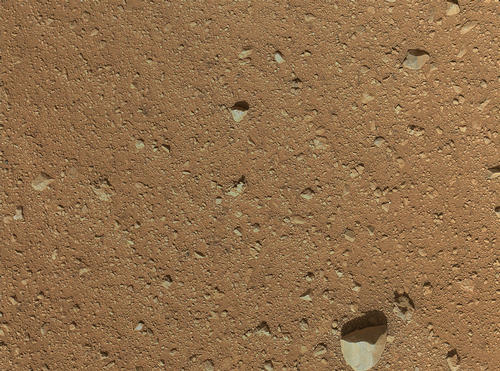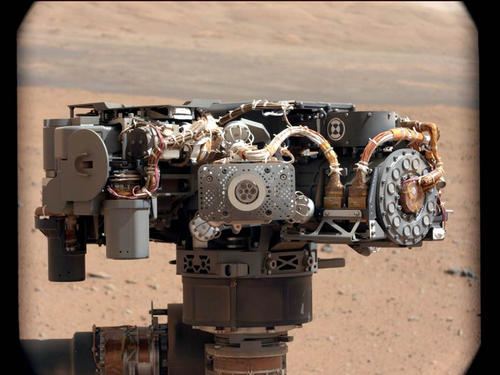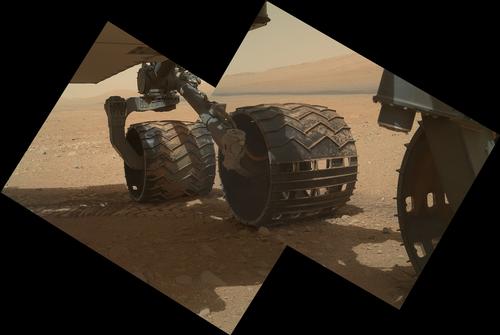Curiosity Aces Tests–Set to Resume Trek
September 14, 2012
After “flawlessly” completing a series of instrument tests this week, Curiosity, NASA’s newest Mars rover, was scheduled to resume its journey across the surface of the red planet Friday evening. So far, Curiosity has traveled 269 feet (82 meters) across Gale Crater, its landing site. After this short drive, Curiosity’s controllers began testing its operating systems and 10 scientific instruments. Curiosity’s next target is Glenelg, a rocky spot in the crater. The rover will study the area with a high-resolution camera and a spectrometer, which determines the level of chemical elements in rock and soil. The largest and most advanced robotic laboratory ever sent to another planet, Curiosity is designed to answer one of the most important questions in planetary science–whether Mars is, or ever has been, capable of supporting microbial life.

A pebble about 3 inches (8 centimeters) in diameter dominates an image of the Martian surface taken by Curiosity's high-resolution Mars Hand Lens Imager (MAHLI). The patch of ground shown is about 34 inches (86 centimeters) across. (NASA/JPL-Caltech/Malin Space Science Systems)

Curiosity's Alpha Particle X-Ray Spectrometer (APXS) (center) can determine the abundance of chemical elements in rocks and soil. (NASA/JPL-Caltech/Malin Space Science Systems)
The rover’s prime target is Mount Sharp (also known as Aeolis Mons), a mysterious 3-mile- (5-kilometer-) high mountain in Gale Crater. Mount Sharp consists of layers of rock that may have been laid down over billions of years. Although the mountain looks similar to layered mountains on Earth, scientists do not know how it formed. As the rover scales the mountain, it will analyze the layers in an attempt to discover how Mars, which was once warmer and wetter, became so cold and dry.

Three of Curiosity's left wheels appear in a composite image made by the MAHLI. The lower slopes of Mount Sharp, the rover's ultimate destination, appear in the distance. (NASA/JPL-Caltech/Malin Space Science Systems)
Additional World Book articles:
- Mars Pathfinder
- Phoenix [spacecraft]
- Space exploration (Probes to Mars)
- The Search for Water on Mars (a Special Report)


